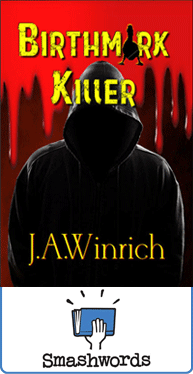I’ll continue with my talk, But first–
Last Clichés:
Silver-tongued Orator—A persuasive and eloquent speaker. Term around since 16th Century, when applied to a preacher Henry Smith (c. 1550-91) and to Joshua Sylvester (1563-1618), a translator. Silver is equated with something fast-flowing and dazzlingly bright, and is a natural metaphor for eloquent speech. The best-known recipient of the “silver-tongued orator” was William Jennings Bryan (1860-1925), who not only was a wonderful speaker, but advocated the free coinage of silver; he won the Democratic presidential nomination in 2896 as a result of a speech in which he said, “You shall not crucify mankind upon a cross of gold.”
Get to the Point—to address the main issue, speak plainly. This term, which in British parlance is usually phrased come to the point, dates from Chaucer’s time. Chaucer himself wrote in the “Prologue” to The Canterbury Tales, “This is the point, to speken short and pleyn.”
Get up and Go—Vital energy, enthusiasm. The Random House Unabridged Dictionary (1987) hyphenates this term and lists it as a noun, originating in the U.S. in the early years of this century. It has numerous precedents—most common—get up and get, still used in some parts of the U.S. Lady Bird Johnson used it in the early 60s.
So, how many did you find?
Now don’t look a gift horse in the mouth, but here’s the rest of my speech from Nov. 1, 2016:
The best antagonist is someone who already plays a part in your protagonist’s life. All my characters are connected in some ways; therefore, the killer is too.
A great antagonist believes that his motivations are valid and his actions justified. He is the hero in his story. My killers know they are doing what needs to be done “in their own mind.” And when you read my books, you’ll see the killer’s thoughts and know they know they are doing the “right” thing.
Create a character whose motivation for opposing the protagonist’s story goal is as strong and logical as the protagonist’s reason for opposing the antagonist’s goal. Of course, my killers are demented in a way and “logical” is in their own mind. They also need a story arc, a change of character in some way. Do my killers change? You decide.
Make an antagonist your readers will love to hate. Let him win occasionally and give him a “kick-the-cat” moment. We need to see why he is the antagonist. I also like to give him at least one endearing quality. I want my readers to make a connection with him. Even if he’s a complete jerk, find one point of connection, one point of contact, between your readers and the antagonist. Find the last surviving ember of his humanity. Fan that ember to life and show it to your audience. In Night Terror, my first book, the arsonist will not hurt an animal. Always saves the pets. To tell the truth, I’m not sure about the killer in Vanity Killed. Let me know what you think, but I think it has to do with love.
————————————
(At this point I read from my Book, Night Terror, Chapter 17.) excerpts as examples I’ll place here.
The dog is heavy, but I manage to lift it up, carry it outside, and set it down onto the grass by a bush. Before walking away, I pat the sleeping form.
…
The car door squeaks as I shut it with agonizing slowness not wanting to attract attention on this street. As I pull slowly away from the curb, a cat darts in front of me. I slam on the brakes, barely missing it. Trembling, I sit at the wheel as I watch it race off into the dark. Tears roll down my cheeks and glancing heavenward, I mutter, “Thank you, for letting me miss the cat. It might have been Sheba.”
I stay for a minute longer, getting my emotions under control.
—————————————
Never create an antagonist who exists merely to obstruct the lead. You will end up with a shallow stereotypical character.
Now, with all those tips in creating an antagonist, how do you choose your killer? Not really sure, but I can tell you how I do it.
As I’ve said, I write from the point of view of the hero and the killer. I write my book and the characters tell the story. Even though I’m writing in the killer’s POV, in the beginning, I’m not really sure who my killer is. Unconventional, yes. Does it work? For me it does. At least in my two books, Night Terror and Vanity Killed. And so far, working in my third book, which has a working title: Birthmark. It’s about a woman who goes shark fishing in Baja, and her shark has a body part in it with a birthmark on it. She’s determined to find out who was in her shark.
When I wrote Night Terror and Vanity Killed, I had an idea who the killer might be. It was one of three different characters. Little did I know there was a fourth one lurking in the background. This doesn’t work for everyone, but I finally come to a spot in my story, where I have to decide who the killer is. After I decide that, then I finish the book.
When the rewrite comes along, I make sure that the clues are in the story that Could lead you to who the killer is. Hopefully I’ve done well, and you won’t know until the killer is revealed.
When I wrote Night Terror, I had a detective read it. He came to me every day with a different character in mind for the killer. When the killer was revealed, he said, “Naughty, naughty, the clues were there.” I considered that high praise coming from a professional detective.
When I wrote, Vanity Killed, I thought I knew who my killer was. However, when the ending was nearing, the real killer popped up and changed my idea.
Right now, my third book, Birthmark, I’m at the juncture where I must decide which character is the killer. I’m sort of at a standstill, trying to make that decision. I have it narrowed down among three characters. The other night, I thought I’d decided, But, then there’s this one character who keeps yelling, “No it’s me!” I never know who’s lurking in the shadows that will present him or herself. That’s the fun of writing my stories. Sometimes I’m shocked at who the killer is as much as I hope you are.
I hope this helps you decide and choose your killer.
I had a captive audience that day. Hope you read to the end here and enjoyed.
Until next time,
Keep Writing,
Julie



